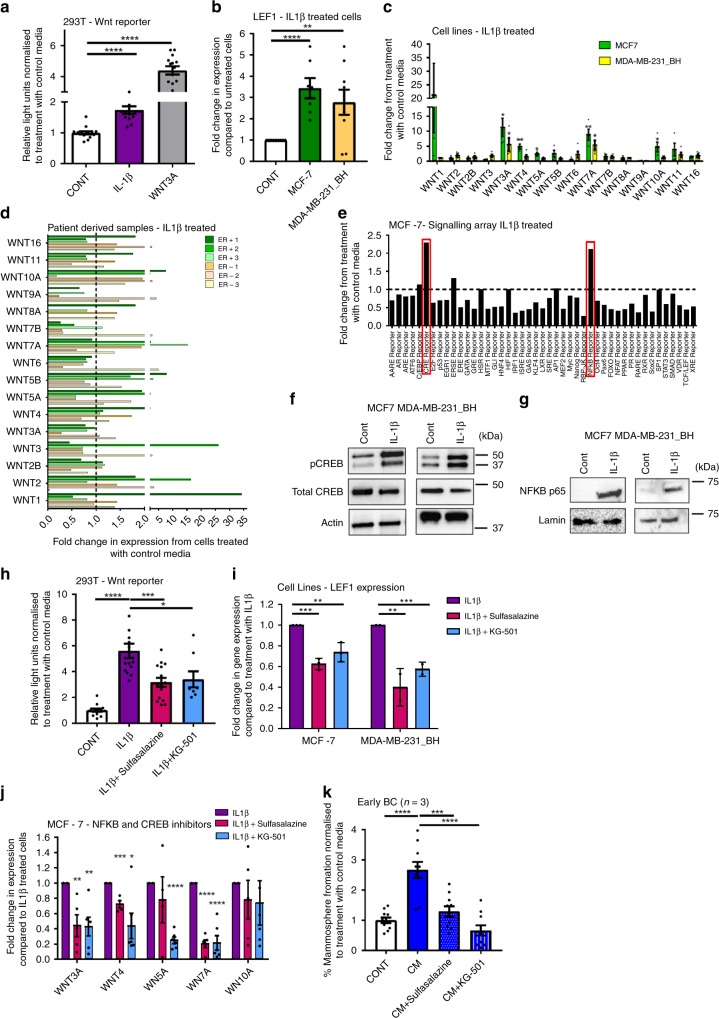Fig. 4.
IL1β promotes Wnt signalling in breast cancer cells via an induction in NFKB and CREB. a IL1β treatment stimulated Wnt reporting in a 293T 7TCF cell line. 100 nM Wnt3A treatment included as a positive control. b IL1β treatment increased expression of Lef1 in both MCF-7 and MDA-MB-231_BH cells compared to treatment with control media. c IL1β treatment increased gene expression levels of Wnt ligands Wnt3A, 4, 5A, 7A and 10A in MCF-7 cells and Wnt3A and 7A in MDA-MB-231_BH cells. d IL1β treatment increased gene expression levels of some Wnt ligands in patient derived samples (n = 6). ER positive samples; green bars, ER negative samples; orange bars. Dashed line set as fold change of 1. Note split axis to show lower fold changes. e IL1β treatment increased NFKB and CRE signalling in MCF-7 cells. f IL1β treatment increased phospho CREB protein, but not total CREB protein in MCF-7 and MDA-MB-231_BH cells. Actin was used as a loading control. g IL1β treatment increased nuclear phospho NFKB p65 protein in MCF-7 and MDA-MB-231_BH cells. Lamin was used as a nuclear loading control. h Treatment with sulfasalazine or KG-501 reversed the induction of Wnt signalling by IL1β in a 293T 7TCF reporting assay. i Treatment with sulfasalazine or KG-501 reversed the induction of Lef1 gene expression by IL1β treatment in both MCF-7 and MDA-MB-231_BH cells. j Treatment with sulfasalazine or KG-501 reversed the induction in gene expression of some Wnt ligands by IL1β . k Sulfasalazine or KG501 treatment reversed the induction in mammosphere formation by CM in early breast cancer patient derived samples (n = 3). Data presented as fold change in percentage mammosphere formation normalised to cells treated with control media. All graphs represent mean ± SEM, *p < 0.05, **p < 0.01, ***p < 0.001, ****p < 0.0001

